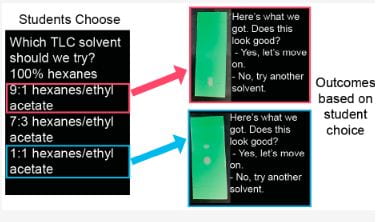Jordan C. Grasso, School of Social Ecology
Professors across disciplines often rely on high-stakes summative assessments in multiple-choice or short-answer exams or lengthy final papers. However, these assessments negatively impact students’ ability to learn and maintain memories, reducing their ability for significant learning and success in and beyond the course (Fink 2013; Owens and Tanner 2017). High-stakes exams are also rooted in neoliberal principles that reinforce inequality inside and outside the classroom (Au 2016). One method to overcome the limitations of high-stakes assessments and to increase significant learning is for professors to instead incorporate frequent informal assessments in the form of reflective journaling.
The Limitations of High-Stakes Assessments
Professors who use high-stakes assessments often create stressful learning environments, especially when coupled with infrequent or nonexistent homework assignments (Heissel et al. 2021; Owens and Tanner 2017). Fear and stress negatively impact the brain’s ability to connect neurons, and chronic stress can shrink some brain structures (Hammond 2015; Owens and Tanner 2017). To increase students’ learning, understanding, memory, and the ability to retrieve what they have learned at a later time, teachers should remove stressful learning situations, including high-stakes tests. Moreover, for professors who utilize flipped classroom designs, students benefit from frequent homework that prepares them for in-class discussions and reduces the stress and fear of speaking in class unrehearsed (Karabulut-Ilgu et al. 2018; Sage and Sele 2015).
Croft and colleagues (2015) describe high-stakes assessments as rooted within a larger testing-industrial-complex that emphasizes neoliberal principles. Professors working with the testing-industrial-complex overwhelmingly rely on high-stakes tests under the false and empirically unsupported notion that it increases learning and preparation. Au (2016) describes this practice as Meritocracy 2.0, or the ideological belief that students are free to work hard and succeed without any social, economic, historical, institutional, or cultural constraints. Although viewed as an objective assessment, high-stakes exams ignore inequality and structures of oppression that students face both inside and outside the classroom and therefore reinforces inequality (Au 2016).
The Opportunity of Reflective Journaling
To reduce the negative implications of high-stakes assessments, professors and students would benefit from replacing these traditional practices with more frequent informal assessments such as reflective journaling. Journaling is beneficial in classes that employ active flipped-classroom designs, and it provides several benefits for students learning. After applying journaling, Sage and Sele (2015) found that students overwhelmingly felt that they read more thoroughly (85% agree), participated more (67% agree), and were more engaged during discussions (92% agree). When students journal about the course material, they are more likely to be vulnerable, share their personal stories, and showcase their significant learning by integrating their lived experiences and acknowledging the human dimension of class content (Fink 2013; Sage and Sele 2015). Vulnerability increases confidence and feelings of community, thus removing stress and improving cognitive learning (Owens and Tanner 2017). Moreover, students can take charge of their learning and direct the class’s direction by highlighting themes they discovered, asking questions, and sharing concerns that emerged as they read.
Examples of Reflective Journaling Assignments
Reflective journaling can be free-flowing or directed, depending on the class level and the professor’s requirements for preparation and participation. Sage and Sele (2015) provide a list of example questions for use in reflective journaling prompts:
- What was the most significant thing you learned?
- What do you want to know more about?
- What might you contribute to this topic based on your work, family, or life experience, or how do you envision yourself using this information in the future?
In my classes, I have incorporated the Question-Quote-Comment (QQC) method. After reviewing course material, but before class, students engage with the following prompts:
- Question: What is one question you have about the material?
- Quote: What quote particularly stands out to you? (Be sure to cite appropriately!)
- Comment: Reflect on the materials by responding to one of the following – Why did you select the quote above? What connections do you see between this week’s material and previous weeks? How do the ideas you read about this week present themselves in your own life?
Journaling removes the stress of traditional high-stakes assessments while improving cognitive function, knowledge creation, and memory (Au 2016; Owens and Tanner 2017). Although reading reflections in the form of journaling requires extra out-of-class time for students, it leads to improved class discussion, better-prepared students, and increased use of peer-based learning (Sage and Sele 2015). High-stakes assessments are empirically unsupported as beneficial, and students will often not remember information beyond the course. As such, university professors should begin to move away from the stressful nature of infrequent high-stakes exams and allow students to reflect on their understanding and personal connections to the material.
References
Au, Wayne. 2016. “Meritocracy 2.0: High-Stakes, Standardized Testing as a Racial Project of Neoliberal Multiculturalism.” Educational Policy 30(1):39-62.
Croft, Sheryl J., Mari Ann Roberts, and Vera L. Stenhouse. 2015. “The Perfect Storm of Education Reform: High-Stakes Testing and Teacher Evaluation.” Social Justice 42(1):70-92.
Hammond, Zaretta. 2015. Culturally Responsive Teaching & The Brain: Promoting Authentic Engagement and Rigor Among Culturally and Linguistically Diverse Students. Thousand Oaks, CA: Corwin.
Heissel, Jennifer A., Emma K. Adam, Jennifer L. Doleac, David N. Figlio, Jonathan Meer; Testing, Stress, and Performance: How Students Respond Physiologically to High-Stakes Testing. Education Finance and Policy 2021; 16 (2): 183–208.
Karabulut-Ilgu, Aliye, Suhan Yao, Peter Savolainen, and Charles Jahren. 2018. “Student Perspectives on the Flipped- Classroom Approach and Collaborative Problem-Solving Process.” Journal of Educational Computing Research 56(4) 513–537.
Owens, Melinda T., and Kimberly D. Tanner. 2017. “Teaching as Brain Changing: Exploring Connections between Neuroscience and Innovative Teaching.” CBE Life Sciences Education 16(2).
Sage, Melanie, and Patti Sele. 2015. “Reflective Journaling as a Flipped Classroom Technique to Increase Reading and Participation with Social Work Students. Journal of Social Work Education 51(4):668-681.

